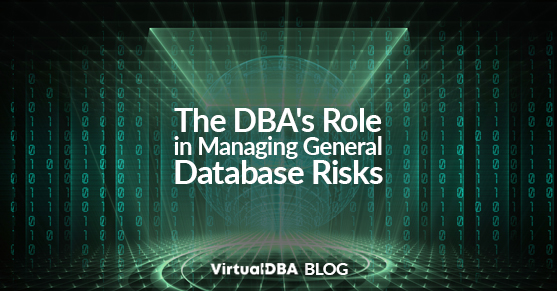Database Administrators (DBAs) are the guardians of an organization’s digital assets. Their role extends far beyond routine maintenance and troubleshooting. A critical aspect of their responsibilities is managing the general risk factors that threaten database systems’ integrity, availability, and confidentiality.
Understanding General Database Risks
Before diving into the DBA’s role, let’s revisit the general risk factors associated with database management systems (DBMS):
- Data Classification: Understanding the sensitivity of data stored in the DBMS.
- Business Impact Analysis: Assessing the potential impact of data loss or system downtime on business operations.
- Threat Identification: Identifying potential threats to the DBMS, including internal and external sources.
- Vulnerability Assessment: Evaluating the system’s weaknesses and potential entry points for attackers.
- Risk Assessment Methodology: Choosing a suitable risk assessment methodology (e.g., FMEA, OCTAVE) to quantify and prioritize risks.
The DBA’s Role in Risk Management
DBAs are at the forefront of managing these risks. They possess an in-depth understanding of the database environment, making them uniquely qualified to identify and mitigate threats. Here’s how DBAs contribute to risk management:
Data Classification
- Collaborate with data owners: Work closely with data owners to accurately classify data based on sensitivity and business impact.
- Implement data labeling: Assign appropriate labels to data to facilitate access controls and security measures.
- Monitor data access: Track and analyze database access patterns to identify potential anomalies.
Business Impact Analysis
- Understand business processes: Develop a deep understanding of how database systems support critical business functions.
- Assess data dependencies: Identify critical data dependencies to determine the impact of data loss or system downtime.
- Create recovery plans: Develop and test recovery plans for different scenarios.
Threat Identification
- Stay informed about threats: Keep abreast of emerging threats and vulnerabilities in the database landscape.
- Conduct threat modeling: Identify potential attack vectors and their potential impact.
- Collaborate with security teams: Work closely with security teams to share threat intelligence.
Vulnerability Assessment
- Regularly audit database systems: Conduct vulnerability scans and penetration testing to identify weaknesses.
- Apply security patches: Implement security patches and updates promptly.
- Review system configurations: Ensure database configurations align with security best practices.
Risk Assessment Methodology
- Participate in risk assessment: Contribute to the risk assessment process by providing technical expertise.
- Prioritize risks: Help prioritize risks based on their potential impact and likelihood of occurrence.
- Develop mitigation strategies: Collaborate with other teams to develop effective risk mitigation plans.
How XTIVIA Virtual-DBA Can Help
XTIVIA’s Virtual-DBA team offers a comprehensive suite of services to help organizations manage database risks. Our experts provide:
- Database security assessments: Identify vulnerabilities and recommend remediation steps.
- Data classification and labeling: Assist in implementing effective data classification and labeling strategies.
- Business impact analysis: Conduct thorough assessments to understand the impact of database disruptions.
- Disaster recovery planning: Develop and test robust disaster recovery plans.
- Security monitoring and incident response: Provide continuous monitoring and rapid response to security incidents.
- Compliance support: Help organizations meet regulatory requirements.
By partnering with XTIVIA, organizations can gain access to specialized expertise and resources, reducing the burden on internal IT teams and enhancing database security.
For more information, please contact us!

